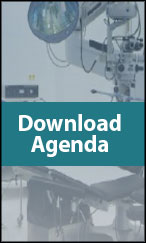Use discount code 794419BH for a 15% discount off the standard rate ($2,095, reduced to $1,780.75).
The discount expires the day before the event and cannot be used onsite.
As combination products grow more commonplace and more complicated, the regulations governing them change as well, as does best practice in designing and validating IFUs. A key question that must still be explored is how to elevate human factors engineering from a mentality of regulatory compliance to one of improving the user experience and gaining marketplace advantage.
The 4th Human Factors Engineering & Usability Studies Summit provides in-depth insight on working with multiple user groups, improving the user interface of medical device software and apps, and properly integrating human factors engineering into device life cycles to avoid wasted time, money, and reputation damage. No other West Coast conference offers such a specific focus on the usability needs of the life science industry!
Top Six Reasons to Attend
- Sean Hägen is presenting on February 5th!
- Strategies to improve device interoperability
- Criteria to emphasize ROI of human factors testing to project management
- Methods to provide a superior sensory experience to users
- Insights into new domestic and international human factors regulations in a post-Brexit marketplace
- Special focus on the lifecycle challenges of apps and digital therapeutics
Join Sean Hägen Presenting “When a User Interface is Too Small: An Autoinjector Case Study”

Sean Hägen, Principal and Director of Research & Synthesis with BlackHägen Design, is presenting on Tuesday, February 5, 2019 from 11.45am – 12.30pm.
Summary of Mr. Hägen’s presentation:
It is common with technology driven product design to continually iterate in an effort to make a device smaller, sometimes this spec driven strategy loses sight of the original objective for why small was important in the first place. Take cell phones, for example, every year they got smaller, going from a brick to a credit card until they were nearly unusable, now they have grown back to something human hands can manipulate.
This case study follows the design and development of a new Epinephrine autoinjector device which utilizes microliters instead of milliliters and therefore can be much smaller. What happens when a person entering anaphylaxis shock has to manipulate a hand-held user interface the size of a pen cap? Here is where the usability engineering process proves its value. HFE working alongside industrial design, following a rigorous UE Plan, guided the design of the device to actually become larger which ended up making the entire system better.
Topics covered include:
- A Case Study a new Epinephrine autoinjector design & development, which utilizes microliters instead of milliliters and therefore can be much smaller.
- What happens when a person entering anaphylaxis shock has to manipulate a user interface the size of a pen cap?
- Better understanding the use-case scenarios, existing user issues and ergonomic challenges drove an entirely new form factor.
- A cross-functional team led by Human Factors Engineering and Industrial Design guided the configuration architecture for a safer, easier to use solution.
